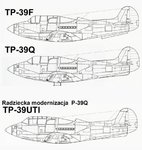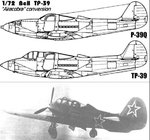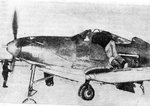Good story...
"While trying to set a date and place for the interview with "our" pilot, we got the impression of him being strict man that prefers to keep his privacy and stay away from the public eye. Another thing that concerned us was that he said he flew 15 types of planes which puzzled us a bit.
So we had some concerns but hoped for the good. Meeting this guy we found him to be nice 83 old year man with good hand shake, very good memory (we brought some cockpit pics from the game and he loved to elaborate on them and thought that they are rather good) and above all an honest man that has no phony thing about him.
The pilot asked us to remain anonymous as he dose not want to appear in any public eye so we can only say that the interview took place in Israel and we will refer to him as "A" in the interview.
Since we had interpreter we can't say we quote him in the most exact manner but we did our best to bring things in the right spirit and facts.
We had only one hour to complete the interview and so here is his story in very brief way:
"A" was born in Gomel in Belarus in 1923, In 1939 at the age of 16 he joined flight club in the city of Odessa and learn to fly Polikarpov-2 for 1 year, He joined the army at the age of 17 though the age of enlisting was 18, he was granted permission to do that after he had sent a letter to the defense minister. In September 1940 he joined the air force flight school in Odessa later towards the coming war the school was moved (orders) to Stalingrad were they became 1000 man combat flight school, When the war broke there was a thought to turn 600 man from them to regular soldiers but it was abandoned and all continued flying studies. They started training on PO-2 (Polikarpov biplane) than moved to Polikarpov UTI-4 (monoplane) and than to I-16.
PO-2 (Polikarpov biplane)
UTI-4 (monoplane)
In 1941 when the war started, the school was moved to a spot near the Don river and when the Germans got close to 100 km' the school was moved to Kazakhstan where they got to train on YAK-1.At that time all the flight instructors were sent to fight the Germans and new flight instructors were appointed from the students," A" was among the newly elected guides. "A" served as fight instructor till October 1944.Then it was decided to send the school instructors to combat duty so they will get actual fight experience and return to be better guides and pass their knowledge to the students. "A" was sent to the"1st Belarus front" were he flew the YAK-9T as close escort for IL-2, The whole plane unit was under the command of the artillery commander of the front and their act was to defend IL-2 who had an artillery officer on board instead of rear gunner and was sent to locate German units and inform the artillery they're whereabouts. They flew in 7 to 9 planes a flight – 1 IL-2, four to six YAK-9T as close escort (no close than 500 m') and 2 more YAK-9T as high altitude escort.
Q: Did you have radio control on board?
A: Only flight leader and his #2 had tow way radio, all the others had receiver radio only.
Q: What were the German planes you were up against?
A: Mostly BF-109 variants, FW-190 and Ju-87 also.
Q: Did you encounter German fighters?
A: No, at that time of war they were week and would not go up against larger fighter group, only to pick on one or two planes.
Q: Did you try to seek for German fighters?
A: No, our job was to protect our most important IL-2, allowing it to be shot down was not an option.
Q: Did you encounter AA fire and hits?
A: We knew the places of AA guns so we went around, I got hit only once and my trim was damaged.
Q: What was your place in the flight?
A: I was #2 of the of the escort leader.
Q: Did you fly a lot and get combat fatigue?
A: No, we had easy times – sometimes we didn't fly for a week and we had nothing to do.
Q: How many combat sorties did you fly in the Belarus front?
A: 25.
Q: Did you have problems hitting targets with the 37 mm' gun of the YAK?
A: No, it had strong recoil but I had my sight and had no problems hitting targets.
Q: Was the YAK physically demanding to fly?
A: Not at all, we flew 400 to 450 kmph and there were not such loads at that speed.
Q: At what height did you start to use supercharger?
A: We activated supercharger and used oxygen masks above 5000 m' but since I didn't usually fly that high I didn't use it.
Q: How did you manage the prop pitch?
A: We use to change prop pitch only on long distance flight in order to conserve fuel otherwise it was at 100%.
Q: How did you find the YAK-9?
A: I liked it very much, it was very good, relievable and simple, could be flown by any average pilot, easy to take off and land. It had no compressed cockpit and no heating system so it was very cold in the winter-we use to ware arctic suits. We use to have our fuel tank filled up and that would degrade the plane behavior, the "hunters" of us who went to pick up German planes, got their tanks partially filled for better dogfight ability. The YAK-3 was better plane and had better organized cockpit without all the radiators sticking up as in the YAK-9, the French Normandy Niemen got it.
Q: What did you do after Belarus?
A: I was stationed in Belarus till the war in Europe was over, Than we moved to Mongolia to fight the Japanees in the same roll as in Belarus, Got to fly two combat sorties and the war was over.
Q: What about after the war?
A: I became squadron leader and flew the La-9, La-11, Mig-15, Mig-17, got to train on Mig-19 but in 1958 the air force was forced to make cuts and the program was stopped.
Q: What plane did you like best?
A: Mig-15/17, they are almost the same.
Q: What about prop driven, La and sort?
A: I liked the YAK better - it was much easier to take off and land.
Q: Did you have to use a lot of pedals during take off?
A: It wasn't such problem, after the tail wheel was up I needed to use more pedals in order to compensate for increased tendency to fly sidewise because of the torque.
Q: What next after the cuts?
A: I was offered to be 2nd in command for wing leader position but my wife said "enough" and I left the air force with full pension benefits.
Q: Did you take the flight as a job or really like it?
A: Oh I loved flying very much and wish I was flying till this day."
"While trying to set a date and place for the interview with "our" pilot, we got the impression of him being strict man that prefers to keep his privacy and stay away from the public eye. Another thing that concerned us was that he said he flew 15 types of planes which puzzled us a bit.
So we had some concerns but hoped for the good. Meeting this guy we found him to be nice 83 old year man with good hand shake, very good memory (we brought some cockpit pics from the game and he loved to elaborate on them and thought that they are rather good) and above all an honest man that has no phony thing about him.
The pilot asked us to remain anonymous as he dose not want to appear in any public eye so we can only say that the interview took place in Israel and we will refer to him as "A" in the interview.
Since we had interpreter we can't say we quote him in the most exact manner but we did our best to bring things in the right spirit and facts.
We had only one hour to complete the interview and so here is his story in very brief way:
"A" was born in Gomel in Belarus in 1923, In 1939 at the age of 16 he joined flight club in the city of Odessa and learn to fly Polikarpov-2 for 1 year, He joined the army at the age of 17 though the age of enlisting was 18, he was granted permission to do that after he had sent a letter to the defense minister. In September 1940 he joined the air force flight school in Odessa later towards the coming war the school was moved (orders) to Stalingrad were they became 1000 man combat flight school, When the war broke there was a thought to turn 600 man from them to regular soldiers but it was abandoned and all continued flying studies. They started training on PO-2 (Polikarpov biplane) than moved to Polikarpov UTI-4 (monoplane) and than to I-16.
PO-2 (Polikarpov biplane)
UTI-4 (monoplane)
In 1941 when the war started, the school was moved to a spot near the Don river and when the Germans got close to 100 km' the school was moved to Kazakhstan where they got to train on YAK-1.At that time all the flight instructors were sent to fight the Germans and new flight instructors were appointed from the students," A" was among the newly elected guides. "A" served as fight instructor till October 1944.Then it was decided to send the school instructors to combat duty so they will get actual fight experience and return to be better guides and pass their knowledge to the students. "A" was sent to the"1st Belarus front" were he flew the YAK-9T as close escort for IL-2, The whole plane unit was under the command of the artillery commander of the front and their act was to defend IL-2 who had an artillery officer on board instead of rear gunner and was sent to locate German units and inform the artillery they're whereabouts. They flew in 7 to 9 planes a flight – 1 IL-2, four to six YAK-9T as close escort (no close than 500 m') and 2 more YAK-9T as high altitude escort.
Q: Did you have radio control on board?
A: Only flight leader and his #2 had tow way radio, all the others had receiver radio only.
Q: What were the German planes you were up against?
A: Mostly BF-109 variants, FW-190 and Ju-87 also.
Q: Did you encounter German fighters?
A: No, at that time of war they were week and would not go up against larger fighter group, only to pick on one or two planes.
Q: Did you try to seek for German fighters?
A: No, our job was to protect our most important IL-2, allowing it to be shot down was not an option.
Q: Did you encounter AA fire and hits?
A: We knew the places of AA guns so we went around, I got hit only once and my trim was damaged.
Q: What was your place in the flight?
A: I was #2 of the of the escort leader.
Q: Did you fly a lot and get combat fatigue?
A: No, we had easy times – sometimes we didn't fly for a week and we had nothing to do.
Q: How many combat sorties did you fly in the Belarus front?
A: 25.
Q: Did you have problems hitting targets with the 37 mm' gun of the YAK?
A: No, it had strong recoil but I had my sight and had no problems hitting targets.
Q: Was the YAK physically demanding to fly?
A: Not at all, we flew 400 to 450 kmph and there were not such loads at that speed.
Q: At what height did you start to use supercharger?
A: We activated supercharger and used oxygen masks above 5000 m' but since I didn't usually fly that high I didn't use it.
Q: How did you manage the prop pitch?
A: We use to change prop pitch only on long distance flight in order to conserve fuel otherwise it was at 100%.
Q: How did you find the YAK-9?
A: I liked it very much, it was very good, relievable and simple, could be flown by any average pilot, easy to take off and land. It had no compressed cockpit and no heating system so it was very cold in the winter-we use to ware arctic suits. We use to have our fuel tank filled up and that would degrade the plane behavior, the "hunters" of us who went to pick up German planes, got their tanks partially filled for better dogfight ability. The YAK-3 was better plane and had better organized cockpit without all the radiators sticking up as in the YAK-9, the French Normandy Niemen got it.
Q: What did you do after Belarus?
A: I was stationed in Belarus till the war in Europe was over, Than we moved to Mongolia to fight the Japanees in the same roll as in Belarus, Got to fly two combat sorties and the war was over.
Q: What about after the war?
A: I became squadron leader and flew the La-9, La-11, Mig-15, Mig-17, got to train on Mig-19 but in 1958 the air force was forced to make cuts and the program was stopped.
Q: What plane did you like best?
A: Mig-15/17, they are almost the same.
Q: What about prop driven, La and sort?
A: I liked the YAK better - it was much easier to take off and land.
Q: Did you have to use a lot of pedals during take off?
A: It wasn't such problem, after the tail wheel was up I needed to use more pedals in order to compensate for increased tendency to fly sidewise because of the torque.
Q: What next after the cuts?
A: I was offered to be 2nd in command for wing leader position but my wife said "enough" and I left the air force with full pension benefits.
Q: Did you take the flight as a job or really like it?
A: Oh I loved flying very much and wish I was flying till this day."



